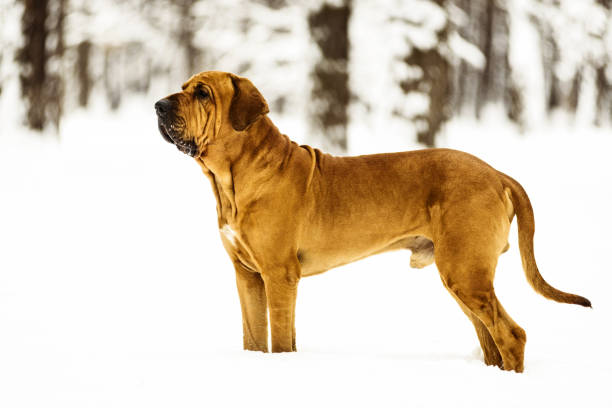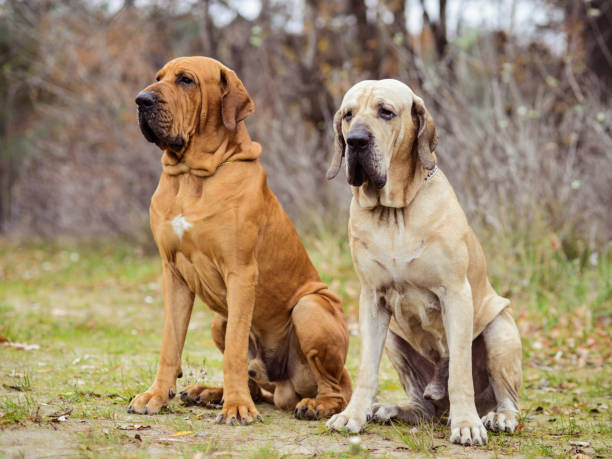Fila Brasileiro (Brazilian Mastiff)

Breed History:
The Fila Brasileiro is a powerful mastiff-type breed developed in Brazil during the 17th century. It was originally bred to track, capture, and hold large prey such as jaguars and runaway slaves on colonial plantations. The breed descends from a mix of European breeds like the English Mastiff, Bloodhound, and Bulldog, combining tracking ability, tenacity, and guarding instincts.
"Fila" means "to hold" in Portuguese, reflecting the dog’s instinct to capture but not kill. Over time, the Fila became prized as a guardian of farms and estates, known for its deep loyalty to its owner and intense suspicion of strangers. Though controversial for its guarding nature, it is considered a national treasure in Brazil and is recognised by the CBKC and FCI.
Considering adopting a Brazilian Mastiff or a similar giant breed? Check out our page "How to look after a Great Dane" detailing what to consider before adopting and our recommended products for a Great Dane and other giant dog breeds.
|
Gender |
Height |
Weight |
|
Male |
65-75 cm |
50-82 kg |
|
Female |
60-70 cm |
40-75 kg |
Size: Large to Giant
Life Expectancy: 9–12 years

Breed Appearance:
The Fila Brasileiro is a massive, heavy-boned dog with loose skin and a distinctive appearance. It has a deep muzzle, a broad head, and pendulous lips and ears, giving it a somewhat droopy look.
Its short, dense coat comes in a variety of colors including fawn, brindle, and black, sometimes with a black mask. The breed moves with a characteristic camel-like gait (pace gait) that’s unique and efficient for long distances.
Breed Type – Guardian:
The Fila is a natural guardian and protector. It is intensely loyal to its family and often forms a near-unbreakable bond with its primary handler. However, it is famous (and sometimes infamous) for its "ojeriza"—an inborn aversion to strangers.
It is not a breed for busy households, dog parks, or social environments. Instead, it excels in guarding property and livestock and being a loyal, one-family companion.

Training:
Training a Fila requires firm, experienced handling. It is intelligent but extremely independent and strong-willed. Early socialization is essential, though the breed’s aloofness with strangers will likely persist.
Positive reinforcement, patience, and strong leadership are key. The Fila should never be trained with force or fear-based methods. Due to their size and guarding instincts, obedience training is non-negotiable for safety and control.
Health & Care:
The Fila is generally hardy but can be prone to:
-
Hip and elbow dysplasia
-
Bloat (gastric torsion)
-
Progressive retinal atrophy (PRA)
-
Skin issues due to folds
Reputable breeders test for these conditions. A high-protein, large-breed diet and regular checkups help maintain overall health. Avoid overexerting young dogs during development to protect joints.

Living Conditions:
The Fila is not suited for apartment life or urban settings. It requires a rural or suburban environment with secure fencing and space to roam. It does best in quiet homes where it can bond closely with its family and perform a guarding role.
Due to its size and territorial instincts, this breed is not recommended for households with many guests, young children unfamiliar with dogs, or multi-dog homes with unfamiliar animals.
Exercise:
Despite its calm demeanor, the Fila needs daily exercise to stay healthy and avoid behavioral issues. Long walks on leash and access to a large, secure yard are ideal.
Avoid dog parks or off-leash areas, as the Fila may not tolerate unfamiliar people or animals. Mental stimulation through scent work or obedience routines is also beneficial.
Grooming:
Grooming needs are low:
-
Weekly brushing keeps the coat clean and reduces shedding
-
Baths only occasionally, unless the dog gets dirty
-
Clean ears and skin folds regularly to prevent infections
-
Maintain dental hygiene and nail trimming routinely
Despite its size, the Fila has minimal odor and sheds moderately.

Advantages:
-
Fiercely loyal and devoted to family
-
Natural guardian with strong protective instincts
-
Low grooming needs and relatively clean
-
Excellent tracking abilities
-
Calm and confident within the home environment
-
Rare and unique breed with rich heritage
Disadvantages:
-
Strong aversion to strangers (ojeriza) can be difficult to manage
-
Not suitable for novice or timid owners
-
Requires early, ongoing socialization and firm training
-
Restricted or banned in some countries due to temperament
-
Large size and strength demand experienced handling
-
Not good with guests, unfamiliar dogs, or small children
-
Can be destructive or aggressive if under-stimulated or neglected

